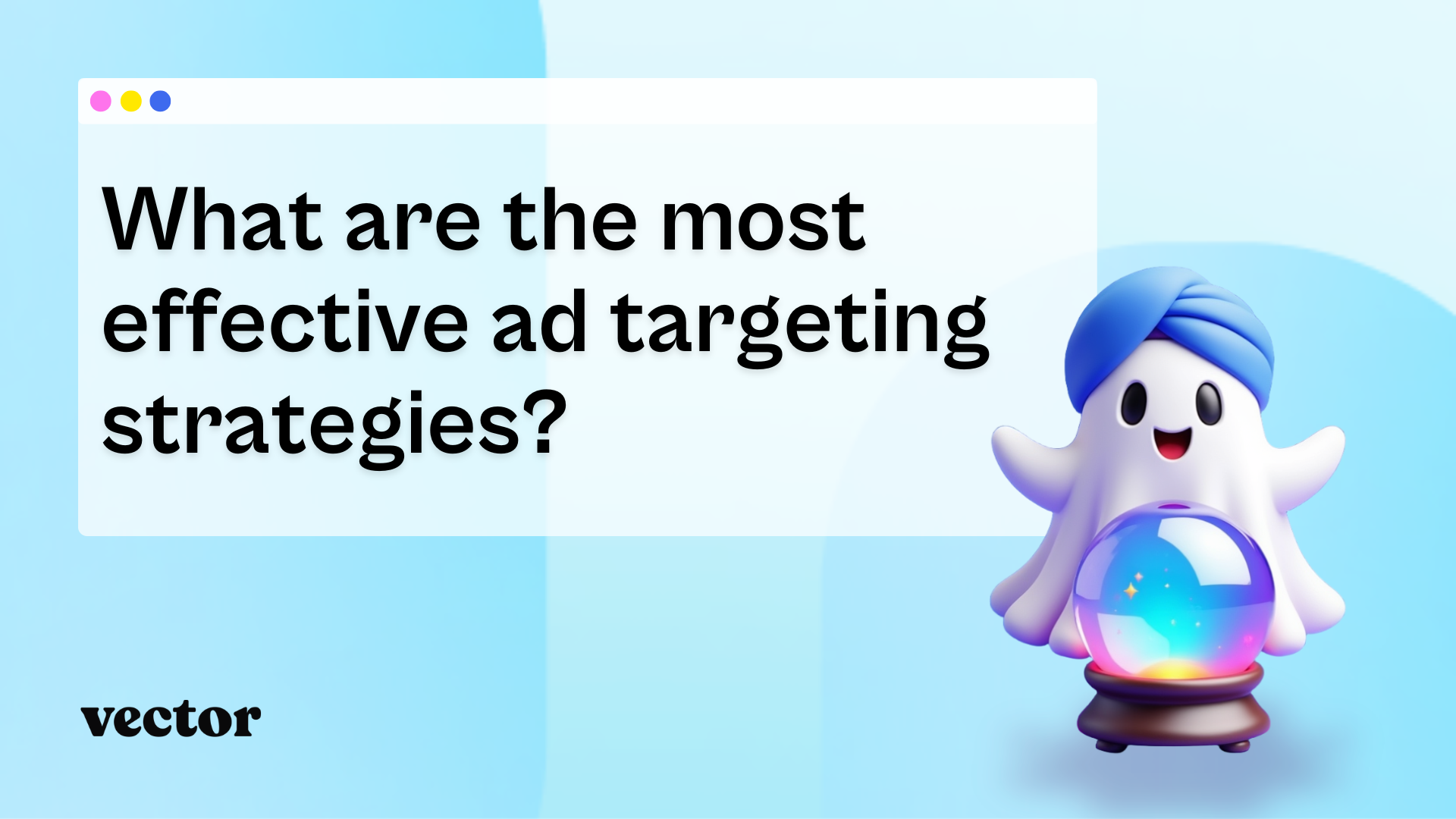What are the most effective ad targeting strategies?

Ad targeting is both an art and a knife fight.
Costs are climbing, platforms are overcrowded, and buyers are ghosting across a dozen tabs before they ever hit your site. One wrong filter, and half your spend evaporates into clicks that never convert.
Today’s B2B marketers aren’t just chasing clicks; they’re building precision systems that identify real decision-makers, use verified data, and adapt as markets shift.
This guide breaks down what’s working now: practical strategies that help you spend smarter, target sharper, and convert faster.
Sharpen targeting with overlooked tactics
Most marketers focus on firmographics and job titles. Those are still important but they’re only a starting point.
These are the quiet moves that save you thousands in ad spend and put your campaigns in front of the people who actually sign checks:
- Exclude low-value roles. Filtering out students, interns, or junior titles can significantly improve lead quality.
- Target competitor engagement. Build audiences around people following competitor pages or interacting with their content. It’s a reliable indicator of active research.
- Use geographic layering. For in-person events, narrow your targeting to the venue and surrounding areas. It’s more efficient than blanketing an entire city.
- Apply recency filters. Focus on contacts who have engaged within the last year. Old data can inflate CPL and dilute results.
Small, consistent adjustments like these are often what separate average campaigns from high-performing ones.
Choose the right targeting model: rent, own, or build
Every ad campaign runs on one of three audience models.
- Rent. You’re using native platform filters. Easy setup, limited control. Great for testing, not for long-term targeting.
- Own. You’re activating your CRM or first-party data. Reliable and compliant, but only as clean as your lists.
- Build. You’re stacking data layers (i.e., job changes, web activity, technographics, contact behavior) to create hyper-specific segments. High effort, but also the highest return.
Here’s how to mix them: use rented filters to test creative, move to owned audiences once you know what resonates, and then build richer composite lists when it’s time to convert.
Each stage has value. The key is knowing when to use each one and how to layer them to stay precise as campaigns mature.
When broad targeting still makes sense
Broad targeting isn’t bad, it’s just misunderstood.
There are moments when going wide helps: launching in a new market, running creative experiments, or trying to educate buyers in a category they don’t know yet.
But it’s a phase, not a forever strategy. Once you spot traction, tighten your filters fast. That “VP of IT” segment that looked great in week one will drain your CPL if you keep it running blind.
Broad plays are like rocket boosters: they’re for takeoff, not orbit.
Scale efficiently with smarter segmentation
Segmentation is where good targeting becomes great.
It’s not just about slicing up your database into audiences. Strong segmentation aligns with how decisions actually get made.
Here’s the framework:
- Map the buying committee. Executives approve budgets, directors evaluate vendors, and managers feel the pain. Talk to each person differently.
- Combine data sources. Combine firmographics, technographics, and contact-level signals like site visits or competitor research.
- Keep lists current. Audiences decay faster than most teams realize. Regular refreshes can lift lead quality by 20–30%.
Use AI to improve precision and speed
AI is giving marketers superpowers.
When done right, it eliminates the manual guesswork and zeroes in on the right people automatically.
- Predictive modeling surfaces lookalike audiences based on real conversion, or closed-won, data.
- Dynamic enrichment keeps profiles fresh with live updates on roles, tools, and behaviors.
- Lead scoring prioritizes high-fit, high-intent contacts so sales can focus on quality over quantity.
- Adaptive segmentation reshapes audiences in real time as behaviors shift.
If a company starts researching “SOC 2 compliance” today, AI recognizes it as early security-buying behavior, moves them into a compliance-focused segment, and triggers campaigns that highlight governance, risk, and trust features – all before your team has time to react.
Of course, clean data is the fuel. If your inputs are outdated, AI will only scale the problem. But when built on verified information, it can dramatically improve accuracy, speed, and budget efficiency.
AI doesn’t replace strategy, it instead removes the lag between signal and action.
Target with confidence — not guesswork — with Vector
Most ad platforms rent you reach. They’re optimized for impressions, not outcomes.
Vector helps you target with precision from the start. Instead of relying on platform filters, you build contact-level audiences of the people visiting your site, clicking your ads, and researching relevant topics and your competitors.
With Vector, you can:
- De-anonymize traffic and turn ghostly clicks into named contacts.
- Build hyper-targeted audiences straight from your CRM, signals, and buying committees.
- Retarget real people with match rates up to 45% on Google/Meta and 90% on LinkedIn.
- Intercept competitive intent before buyers slip into a rival’s funnel.
Want to learn more? Vector has two plans for B2B marketers: Reveal shows you who’s ads-ready, Target lets you put your ads directly in front of them.
Ad targeting
doesn't have to be
a guessing game.
Turn your contact-level insights into ready-to-run ad audiences.
Frequently asked questions



